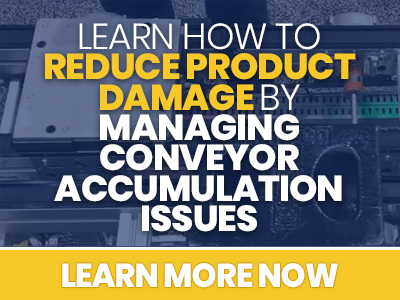Let’s be honest: traditional accumulation methods are just okay. They’re not the worst, but there are some drawbacks. They cause your client’s conveyor system to run less efficiently (thanks, backpressure and friction), and traditional accumulation methods can also cause product damage due to unavoidable collisions on the line. Even if you add stops to halt progress upstream, products can be jarred and dislodged quickly because there is no gentle deceleration of the pallet.
This is my face whenever I hear someone extolling the virtues of this outdated conveyor tech:

There has to be a better way!
You’re right, and we’ve designed it. Here are the deets:
- This accumulation method eliminates product collision entirely.
- It significantly improves conveyor efficiency.
- It’s safer for operators.
- It also reduces wear and tear on the conveyor.
We call it the Zero Contact Zoned Conveyor, and it’s here to help you save the day. You’ll be a conveyor genius. A conveyor savant. A conveyor hero, if you will.

Too much? Nope. Just enough.
Check out our short video to see how it works:
The Zero Conveyor Zoned Conveyor is a conveying system with individually managed accumulation zones to ensure there is always a gap between products. The product zones work in isolation, taking cues from products or pallets (zones) upstream to avoid unexpected stops. This provides gentle product handling by eliminating the stops that can cause product damage.
Rather than accumulating product on a conveyor that’s continually running under stopped product, the individual zones’ conveyor belts stop during accumulation. The Zero Contact Zoned Conveyor eliminates belt to product rubbing wear and tear due to friction and reduces the unnecessary need to continuously run the motors and conveyor media. This reduces the risk of product damage, reduces energy consumption, and reduces wear and tear on the conveyor. Win, win, win!

Read more about our innovative way to accumulate a pallet that avoids product damage and inefficient operation. Download How to Manage Conveyor Accumulation Issues today.







Leave a Comment